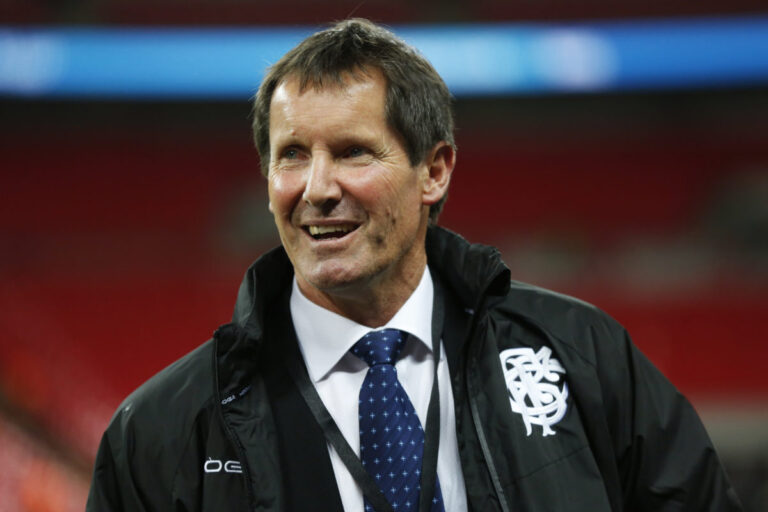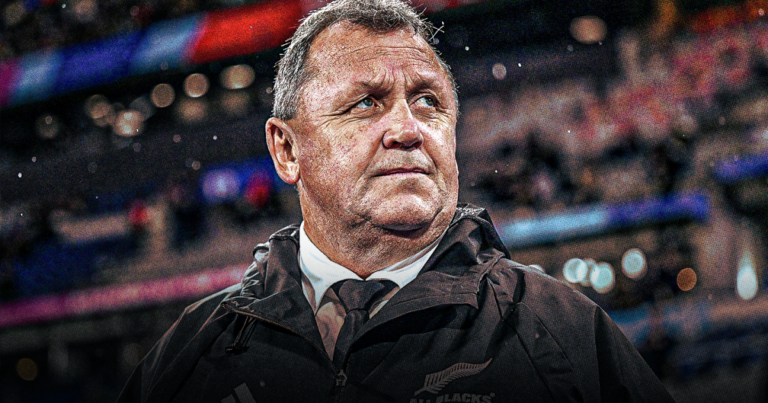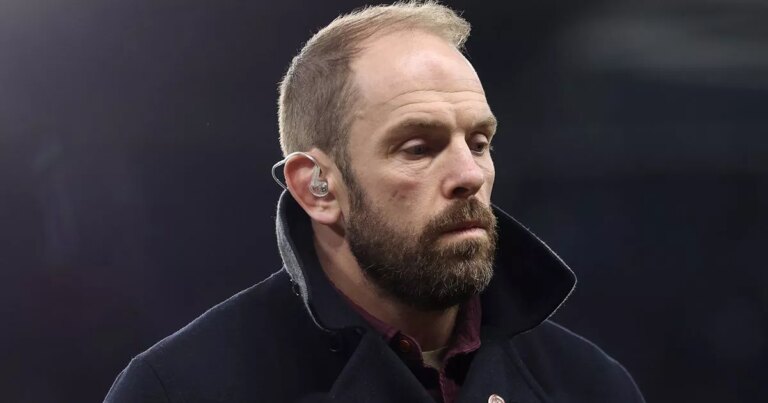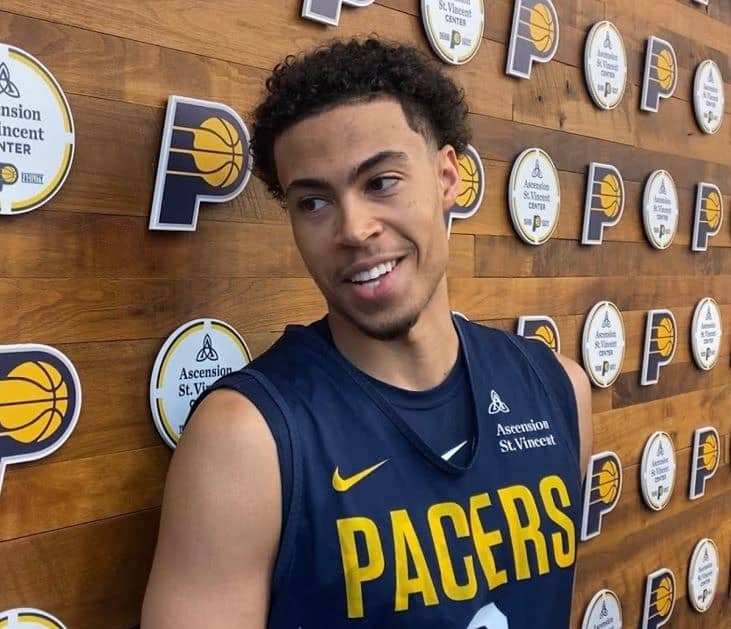
Jesse Kriel, Johan Ackermann and Frans Ludeke provide unique insight into a Japan Rugby League that’s stronger than most think, writes SIMON BORCHARDT in SA Rugby magazine.
Six seasons in Japan have boosted Jesse Kriel’s bank balance, but it’s also shaped him into the player and person he is today.
The Springbok centre had his first stint in the then Top League in 2015-16 with the NTT Docomo Red Hurricanes, while on loan from the Bulls. After the 2019 World Cup, he joined the Canon Eagles on a permanent deal that no South African franchise could match. He’s never looked back.
‘There’s money involved for every South African who goes overseas and that’s one of the motivators,’ the 31-year-old tells SA Rugby magazine. ‘But the main thing for me is that there are a lot less distractions in Japan. You eat, sleep rugby, and get so much time to hone in on your skills and become a better rugby player. I think that’s the reason I’ve been here for six seasons.’
Another attraction for Kriel, and other big-name Boks in Japan like hooker Malcolm Marx, flank Kwagga Smith, centre Damian de Allende and wingers Cheslin Kolbe and Kurt-Lee Arendse, is that Japan Rugby League One (JRLO), as it’s now known, is far less demanding compared to the French Top 14 (where foreign signings face a marathon domestic season), English Premiership and United Rugby Championship, with those clubs also having European cup commitments.
The 2024-25 JRLO season began in December and by mid-May, Kriel had made 16 appearances for Canon. But he did play the full 80 minutes on each occasion for a total of 1 280 minutes and is quick to correct a common misconception.
‘It’s definitely not easy rugby. There are so many international players here – and some absolute freaks, including guys from rugby league. If I look at my position, outside centre, every weekend you’re coming up against quality international players like [Wallaby] Samu Kerevi and [All Black and Fijian] Seta Tamanivalu who are constantly challenging you and bringing out the best in you.
‘You also get to learn from different coaches,’ he adds. ‘I’ve been coached by Australians, New Zealanders and Japanese who all see the game differently. You can listen to all of that and then decide what best applies to you and what you can add to your game. That’s really been stimulating for me as a rugby player.’
Kriel has also embraced living in a country that couldn’t be more different to South Africa.
‘I’ve learned so many things from the culture of respect here. The Japanese have unbelievable values, they’re good people who really go the extra mile to help you and make you feel comfortable, and they have an unbelievable work ethic.
‘Living in a foreign country also forces you to grow up as a young professional and what I’ve learned has shaped me into the person I am today.’
Kriel regards the relationships made and friendships forged as the most rewarding part of his time in Japan – and he doesn’t just hang out with Saffa teammates Faf de Klerk, Jeandré Labuschagne and Brendan Owen.
‘I arrived here not being able to speak a word of Japanese and the local boys took me for a welcome meal. They still make a big effort to do activities together. And because there are Australians, New Zealanders, Tongans and Fijians here, barriers are broken down and you socialise with guys who you wouldn’t have necessarily socialised with when they were at other teams.
‘But ja, it’s always nice to catch up with other South Africans and we do keep in touch. I spend a lot of time with Cheslin, who’s in the same building as me, and we catch up with guys from other teams when we play them. We also have an SA WhatsApp group and most of the players are on there.’
While Kriel wasn’t aware that there were as many as 48 Saffas playing in JRLO across the three divisions this season (see list below), he’s not surprised by their popularity.
‘South Africans are extremely hardworking, confrontational [on the rugby field] and love the physical part of the game. When you mix that with the speed and skill of the Japanese, it’s a deadly combo.
‘South Africans are also generally good people who get on with everyone else and really make an effort to understand the Japanese culture and immerse themselves in it. I think because we get exposed to so many cultures back home, we’re able to easily fit into any environment.’
However, some South Africans do struggle to adapt and Kriel has some good advice for those arriving in Japan for the first time.
‘Come over here with a mindset of embracing everything that gets thrown at you and to throw yourself into any opportunity to understand the culture. Try to spend as much time as you can with your Japanese teammates, because it’s the most fun you’ll ever have. Open your eyes to what Japan has to offer. If you come here with the mindset you’d have in South Africa and are closed off to making new relationships and friendships, then it will be quite tough. And take Japanese lessons if you can because it really helps spark relationships when you can start communicating.’

South African coaches Johan Ackermann and Frans Ludeke both had to overcome the language barrier in Japan.
Ackermann coached the Lions to successive Super Rugby finals in 2016 and 2017, and Gloucester in the English Premiership, before heading east for stints with the NTT Docomo Red Hurricanes (2020-2022) and Urayasu D-Rocks (from 2023). The 54-year-old won JRLO Division Two with Urayasu last season before returning to South Africa in January to take up a consulting role with the Junior Boks and will travel with the team to the World Rugby U20 Championship in June.
‘It’s been nice coaching in one voice again,’ says Ackermann, who wasn’t always able to get the message across to his Japanese players when using a translator.
‘When you’re in a team meeting or talking to players, you try to give the translator a heads-up about what you’ll discuss. But in reality, when you speak from the heart and go slightly off-topic, some Japanese words can have completely different meanings. If the translator doesn’t pick the right word, your message can come across differently – not necessarily wrong, but maybe less intense or more intense than intended. Those small, subtle changes can dilute the punch of your message.
‘The translators have been involved in rugby for a long time, so they usually know what to say and players can also pick up on the emotional side of important messages, but it’s still tough. What I missed most in Japan is the small talk – on the field, on the bus, or just one-on-one with a player. Passing by, reminding them of something or asking how they’re doing. Without a translator, I can’t really engage in those conversations, which makes it challenging.’
Ackermann tried learning the language in the beginning, but couldn’t dedicate the time required – ‘at least two hours a day’ – to reach a conversational level.
‘I picked up a few words, numbers, key rugby terms like for lineouts and instructions like “get low” or “accelerate”. I can also manage basic phrases like “How are you?” or “Thank you” and I can order
a coffee.
‘Players like [former Sharks loose forward] Tyler Paul, who aim to play for Japan, put in a lot of effort. Four years later, they can speak decent Japanese, but it’s still challenging.
‘I think it depends on your aptitude for languages – some pick it up easier than others and I’m not one of them!’
Ludeke spent seven years at the Lions and eight at the Bulls, who he coached to back-to-back Super Rugby titles in 2009 and 2010. When the opportunity arose to coach the Kubota Spears, Frans, his wife Anelia and their four children (including three-year old triplets) made the move to Japan. A decade later, the 57-year-old remains in the job with his family by his side.
‘Japan has changed a lot recently,’ says Ludeke, who took Kubota to the Division One semi-finals twice before winning their first title two seasons ago. ‘With so many international players, Japanese players make a huge effort to speak English. My Japanese isn’t great, but we’re spoiled with translators available 24/7 to help communicate.
‘You have to be sharp, to the point, and accurate. It’s a challenge to deliver your message through someone else, but communication is king. If you don’t get it right, you’ll struggle. At our club, we’ve developed a team language to help players communicate on the field. With calls and systems in place, it works. Over time, synergy and body language kick in. Translators help, and being at a club for a long time makes it easier. It was a massive challenge initially, but you find ways to make it work.
‘For me, rugby is rugby,’ Ludeke adds. ‘You’re surrounded by like-minded people who want to perform. You build relationships, and the language barrier fades. For foreign coaches or players, the biggest challenge is ensuring families settle and enjoy life in Japan.’

While JRLO is ranked below tournaments like Super Rugby and the URC, Ackermann says the standard of rugby improved significantly while he was there.
‘The games, strategies and physicality have gone up a notch. Every team plays fast, so it’s definitely faster than many other competitions. Ball-in-play time is high because teams run a lot and often kick for the corner instead of taking points from a penalty. The skill level is decent, so the ball stays in play a lot.’
It’s at set piece where Ackermann believes Japanese clubs would struggle against Super Rugby or URC opposition.
‘Japanese front rowers take pride in their scrummaging, but they often lack the size of other nations. But with the influence of foreign players like James Haskell, Sam Cane, and coaches like Dave Rennie, Todd Blackadder, Robbie Deans and Frans Ludeke, the technical aspects of scrums and lineouts are improving. Japanese scrum coaches are also developing well, but size remains a challenge.
‘The rucks are very competitive as teams are always going for the ball. That sometimes makes it a bit messy, but I’d rather call it highly competitive.’
Ludeke was surprised by the Japanese’s passion for the game when he first arrived.
‘Rugby’s been played here for over 100 years, and university rugby is huge – sold-out crowds every weekend. They play a fast, skilful brand of rugby, not much kicking or forward-dominated play.
‘People might think Japanese players are small, collisions aren’t tough or set pieces aren’t challenging, and initially, I noticed differences in collisions and skill accuracy. But over the past 10 years, that gap has closed significantly. Now it’s about programmes, people and performance. Top international coaches like Robbie Deans, Steve Hansen, Dave Rennie, Kieran Crowley, Wayne Pivac, Scott McLeod [who’s with Ludeke at Kubota], Todd Blackadder and Glenn Delaney have transformed the game here.
‘Size helps, but good technique and coaching create quality set pieces and dominant collisions.’
Foreign players have played a crucial role in raising rugby standards in the Land of the Rising Sun.
Only four foreigners per team are allowed on the field at any time (see below), but clubs have found a way around this by encouraging foreigners to qualify to play for Japan under World Rugby’s residency rule (initially three years and now five). That allows them to be classified as local players and clubs to sign more foreigners.
‘We’ve got nine South African players at Kubota because I’ve been here for 10 years,’ says Ludeke. ‘When I started here, we just had Lappies Labuschagne, Grant Hattingh, Louis Schreuder and Louis Fouché. Then Gerhard van den Heever, David Bulbring and Ruan Botha arrived – and stayed. They became eligible to play for Japan and counted as Japanese players for the club, which allowed us to get more international players.’
A large South African contingent hasn’t created any problems at the club, according to Ludeke.
‘If you understand culture, it’s not an issue. And I don’t handle recruitment alone – the club’s general manager is also involved and he values South African players. We recruit quality players who add value, influence, culture and excel in their positions.’
While Springboks and quality South African provincial players are in high demand, Japanese clubs are also targeting South Africa’s junior talent. Paarl Boys’ High twins, centre Tristan and lock Jayden Joubert, recently spent a week in Japan at the invitation of a top club, while other clubs chased the signature of Grey College centre Ethan Adams and lock AJ Meyer, both of whom decided to stay in South Africa.
‘They need to ask themselves if they believe they can make the Springboks,’ says Ackermann of schoolboys faced with a tough decision. ‘For example, if you’re a 16-year-old No 8 up against players like Evan Roos, Cameron Hanekom or Jasper Wiese, you might think, “Can I outplay them in three or four years’ time?” If not, you might consider playing elsewhere.’
Japanese clubs either offer schoolboys a ‘trainee’ opportunity or a professional contract, and there are significant differences between the two, explains Ackermann.
‘Trainees are young players who train with the team and play in friendly matches,’ Ackermann explains. ‘They don’t earn as much money as contracted players and only play five to seven matches a season. They are positioned to potentially join the main squad later, but at 18, 19 or 20, you only improve by playing. If you don’t play, you don’t get better.
‘If you sign as a professional in the main squad, you’ll play senior rugby, which is fantastic for development. But there’s no U19 or U20 competition in Japan, so you’re straight into senior men’s rugby.
‘The big question for South African schoolboys is whether you’re willing to wait five years to qualify for Japan. It’s tough to become a Springbok while playing in Japan, because you’re less likely to be in the media spotlight, so you might need to return to South Africa in three to four years’ time to chase that Springbok dream.’
Ludeke admits finding young players who can qualify for Japan is attractive.
‘But it’s getting tougher with the eligibility rules tightening [from 2026-27],’ he adds. ‘We prioritise quality players who can win games now. A quality 24- or 25-year-old is a gold nugget, if you can retain them.’
Ludeke says it’s important to acknowledge the role the Kubota company, particularly the two general managers he’s worked with – Mitsuru Ishikawa and Maekawa Hironori – have played over the past 10 years.
‘Not only with their leadership and vision but also investing in the South African players’ careers and families,’ he adds. ‘We owe them a lot and are grateful.’
South Africans in Japan Rugby League One
(48 Players, 7 Coaches)
Division One
(38 players, 6 coaches)
Saitama Panasonic Wild Knights (3) – Damian de Allende (centre), Lood de Jager (lock), Ockie Barnard (lock).
Kubota Spears Funabashi Tokyo Bay (11) – Malcolm Marx (hooker), Schalk Erasmus (hooker), Ruan Botha (lock), David Bulbring (lock), Pieter ‘Lappies’ Labuschange (flank), Merwe Olivier (flank), Tyler Paul (loose forward), Rikus Pretorius (centre), Gerhard van den Heever (fullback/wing). Coaches: Frans Ludeke (head), Russell Winter (defence).
Toshiba Brave Lupus (1) – Stephan du Toit (fullback).
Shizuoka Blue Revs (3) – Kwagga Smith (flank), Sanele Nohamba (scrumhalf/flyhalf), Sylvian Mahuza (wing).
Kobelco Kobe Steelers (1) – Willie Potgieter (flank).
Tokyo Suntory Sungoliath (2) – Pierich Siebert (flank), Cheslin Kolbe (wing).
Yokohama Canon Eagles (5) – Jeandré Labuschagne (flank), Faf de Klerk (scrumhalf), Jesse Kriel (centre), Brendan Owen (fullback). Coach: CJ van der Linde (assistant).
Mitsubishi Sagamihara Dynaboars (4) – Khutha Mchunu (prop), Walt Steenkamp (lock), Friedle Olivier (flank), Kurt-Lee Arendse (wing/fullback).
Toyota Verblitz (2) – Adré Smith (lock), Pieter-Steph du Toit (flank/lock).
Mie Honda Heat (7) – Matthys Basson (prop), Franco Mostert (lock), Janko Swanepoel (lock), Dawid Kellerman (centre), FC du Plessis (fullback). Coaches: Marius Goosen (defence), Justin Downey (assistant).
Urayasu D-Rocks (5) – Lourens Erasmus (lock), Wimpie van der Walt (lock), Jasper Wiese (No 8), Shane Gates (centre). Coach: Johan Ackermann (team adviser).

Division Two
(9 players, 1 coach)
Toyota Industries Shuttles Aichi (2) – James Mollentze (centre), Sebastian Boshoff (centre).
NEC Green Rockets Tokatsu (1) – Brendon Nell (lock).
Hanazono Kintetsu Liners (1) – Brenden Venter (centre).
Shimizu Koto Blue Sharks (2) – Johnny Kôtze (centre), Conrad van Wyk (fullback).
Hino Red Dolphins (2) – Murray Koster (centre). Coach: André Pretorius (assistant).
Kamaishi Seawaves (2) – Muller Uys (loose forward), Gerdus van der Walt (centre).
Division Three
(1 player)
Kurita Water Gush Akishima (1) – Mike Williams (lock, Zimbabwe-born).

Foreign Policy
On-field limit: Teams can field up to three Category C players (players who have represented a foreign national team and are ineligible for Japan) at any one time. There is no limit on Category B players (foreign players eligible for the Japanese national team due to residency or other qualifications), but teams must have at least 11 Category A players (Japanese international or non-international players) on the field at all times.
Squad composition: At least 80% Category A players, meaning a minimum of 40 Japanese players in a typical squad of 50. The combined total of Category B and Category C players cannot exceed 20% of the squad, or roughly 10 players. There is a specific cap of nine Category B and C players combined per team, ensuring a balance between local and foreign talent.
New eligibility rules from the 2026-27 season: JRLO is changing the way foreign-born players who have not played Tests for their home countries will be considered for the season after next. If they do not meet eligibility rules through Japanese heritage, or six years of junior schooling between ages six and 15 in Japan, they will now only be considered as a local player if they have been selected for and played 30 Tests for Japan. All other players will be considered as foreign players, and there are restrictions on how many of those players can be on the field at any one time. Teams are allowed nine foreign players in a match-day squad of 23. Each team will still be allowed three foreign capped Test players.
– This article first appeared in SA Rugby magazine. SUBSCRIBE HERE!

Photos: Kaori Matsumoto/Daisuke Ono/Japan Rugby Magazine





